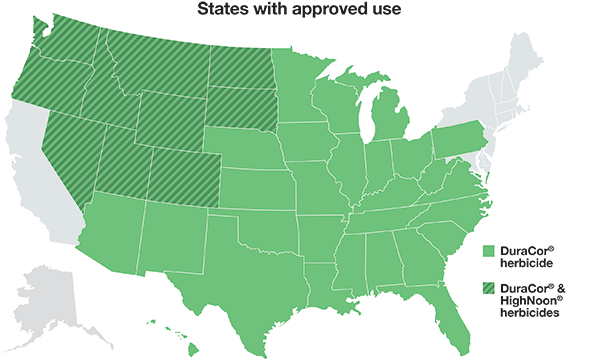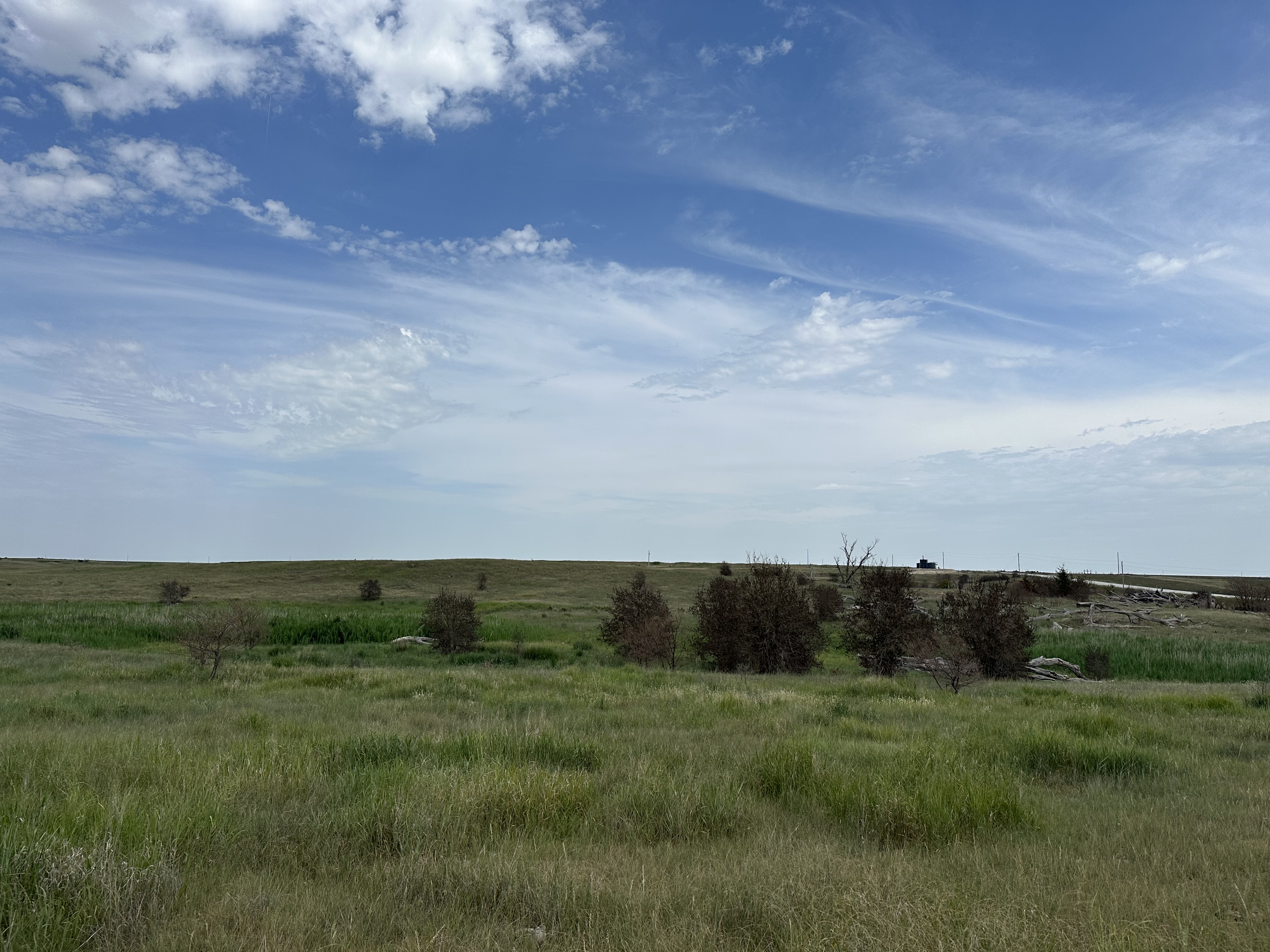New Options for Gaining Control of Invasive Locust Brush

Fast growing with strong, dense, rot-resistant wood and fragrant flowers, there are plenty of things to like about locust trees. Locust species are native to the eastern U.S., but they were also cultivated by Native Americans and European settlers for their many positive characteristics. Now they can be found all across the country. Locust wood is good for making things — like railroad ties, furniture and fence posts — and locusts work well as tree lines in fields. Their wide networks of roots are good for protecting against erosion and farmers also used to plant locusts as a way to restore nitrogen to soils. In towns, locusts were sometimes selected to line neighborhood streets. Thornless horticultural varieties remain popular in backyards and landscaping.
In western rangelands and pastures, however, locust trees — black and honey varieties especially — have become more of a nuisance than a resource. They produce an abundance of seeds and clone themselves through their prolific root systems.1 These thirsty plants use lots of available water, and as they grow rapidly, they shade and crowd out native vegetation. When they flower, locusts compete with native vegetation for pollinators.2 Male trees produce huge thorns that can puncture tires on farm equipment and injure livestock if they rub against them. Researchers also believe that the nitrogen-fixing qualities of locust trees may make the soil around them hospitable to other types of invasive vegetation, leaving even less room available for native species. When locust trees take up valuable grazing land, ranchers may have to supplement with purchased hay — a cost that could be felt all the way at the supermarket.
Locust trees can thrive in just about any environment. They’ve become invasive in many parts of the country and can be extremely challenging to control. Typical mechanical methods of brush control don’t work against locust trees because they reproduce through root suckering and stump sprouting, creating groves of trees with an interconnected root system.2 The NRCS cautions, “Cutting young trees results in excessive re-sprouting from the stump and roots, compounding the original problem exponentially.”3 Burning is also not a long-term solution, as it takes out mature vegetation but leaves the thriving root systems below ground to re-sprout. Small trees can be pulled out of the ground with equipment before root systems become too extensive, but because locust trees grow so quickly, this isn’t usually a practical solution. For land managers and ranchers facing significant locust infestation, herbicide treatment is often the most efficient way to gain control.
Typically, herbicide control of locust involves treating cut stumps, but this has some disadvantages. First, cutting plants and treating them individually is labor intensive. Application must be targeted because many herbicides effective on locust can also harm desirable grasses and native vegetation – exacerbating the problem of invasives. Treating cut stumps also doesn’t address the locust seedbank, which can remain viable for several years. Even with seemingly effective herbicide treatment, dense groupings are known to re-sprout several years later, requiring careful monitoring and re-treatment.2
Ranchers and land managers have recently gained experience with some new options for controlling locust that can make the process more convenient. Corteva Agriscience offers two herbicide brands with the same active ingredients which can be used to control locust trees. DuraCor® herbicide and HighNoon® herbicide both contain Rinskor™ active and aminopyralid, the active ingredient in Milestone® herbicide. HighNoon® is approved for use in select states and offers some additional flexibility for use in non-crop areas.

Ranchers and land managers in the central U.S. who have used DuraCor® herbicide or HighNoon herbicide for locust management are reporting near-complete and lasting control. The aminopyralid in these products is proving very effective on root systems, which is critical in gaining control over a locust “mother plant” to prevent successive sprouting of clones.

View of locust trees in Rooks County, Kansas, just after treatment with DuraCor (16 oz/A) + Remedy Ultra (6 oz/A) + MSO in the summer of 2023. Treatment was via aerial application by Birddog Aviation (Stockton, Kansas). Photo courtesy of Katie Koenig.
These products can also be good options against locust because they work selectively and won’t harm beneficial grasses or forbs. This allows for broadcast application that is much more efficient than treating cut stumps. The products can even be applied via aerial application to address large areas. DuraCor and HighNoon should be applied to locust trees in summer, when they are fully leafed out, for maximum foliar absorption. For older, denser groups of brush, Remedy® Ultra herbicide is convenient to tank-mix with DuraCor or HighNoon to help capture multiple species along with locust.

Approximately one year after treatment with DurCor + Remedy Ultra (May 2024), the same locust trees show no signs of re-sprouting. None of the grass below the trees has been injured. HighNoon — which features the same active ingredient as DuraCor — is approved for locust control in select states west of Kansas. Photo courtesy of Katie Koenig.
Once prized for their utility, locust trees today often stand in the way of what ranchers and land managers need to do – preserve grazing lands to feed livestock and care for the landscape. With convenient application and outstanding control, DuraCor and HighNoon herbicides make it easier to clear out unwanted locust and clear the way to land management goals.
1 Taylor, David. “Black Locust (Robinia pseudoacacia).” U.S. Forest Service. Accessed May 3, 2024. https://www.fs.usda.gov/wildflowers/plant-of-the-week/Robinia-pseudoacacia.shtml.
2 Wheeler, Susan. “Black Locust.” Alien Plant Working Group Least Wanted. July 7, 2009. https://www.invasive.org/alien/fact/rops1.htm.
3 “Honey Locust.” USDA Natural Resources Conservation Service. September 1, 2008. https://plants.usda.gov/DocumentLibrary/factsheet/pdf/fs_gltr.pdf
Under normal field conditions, DuraCor® and HighNoon® are non-volatile. DuraCor, HighNoon and Milestone® have no grazing or haying restrictions for any class of livestock, including lactating dairy cows, horses (including lactating mares) and meat animals prior to slaughter. Label precautions do apply to forage treated with DuraCor, HighNoon and Milestone and to manure and urine from animals that have consumed treated forage.
When treating areas in and around roadside or utility rights-of-way that are or will be grazed, hayed or planted to forage, important label precautions apply regarding harvesting hay from treated sites, using manure from animals grazing on treated areas or rotating the treated area to sensitive crops. Label precautions apply to forage treated with Milestone and to manure from animals that have consumed treated forage within the last three days.
DuraCor, HighNoon and Milestone are not registered for sale or use in all states. Contact your state pesticide regulatory agency to determine if a product is registered for sale or use in your state. Always read and follow label directions.
Sharing innovative research, success stories and tips with invasive plant managers.